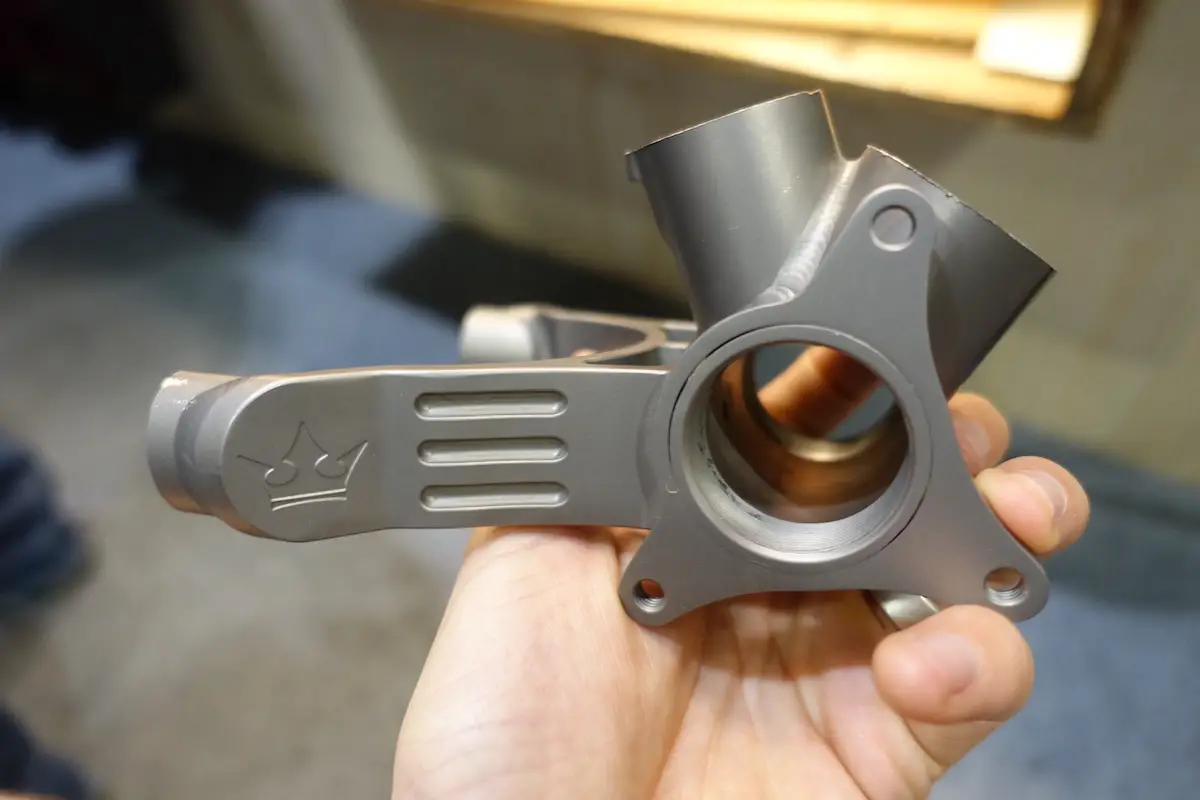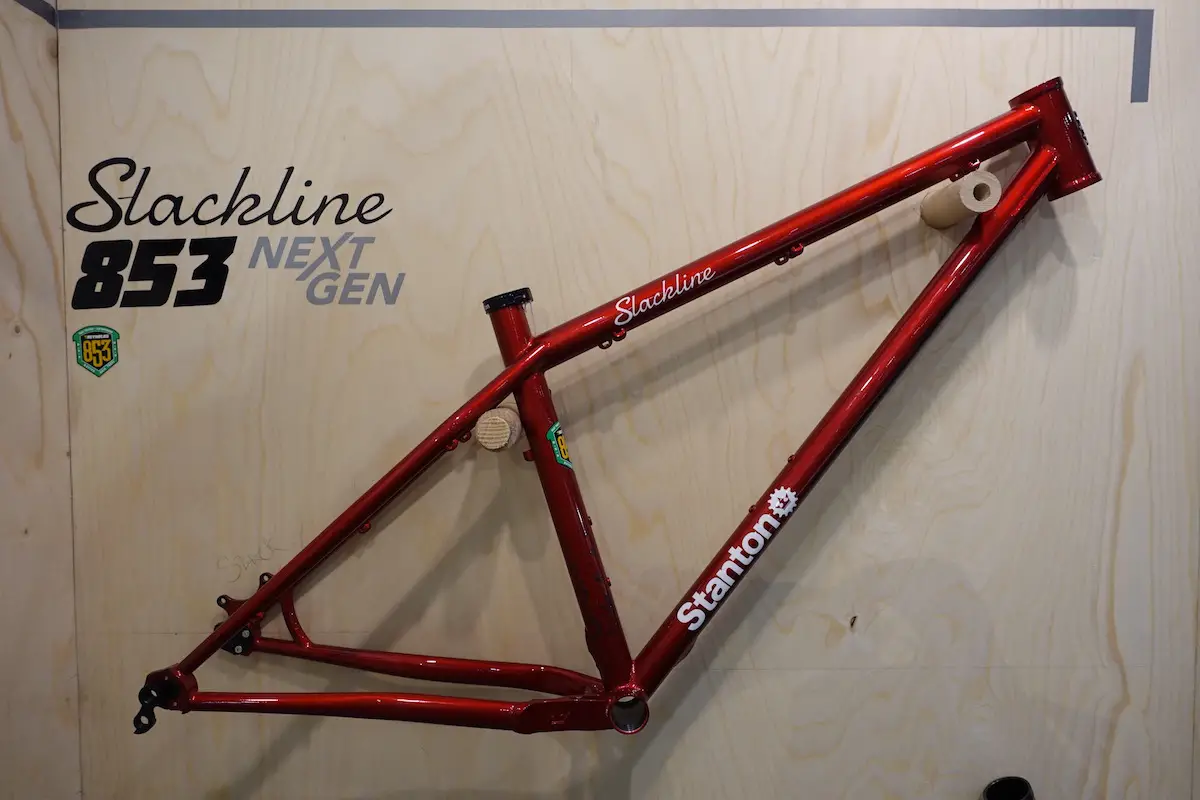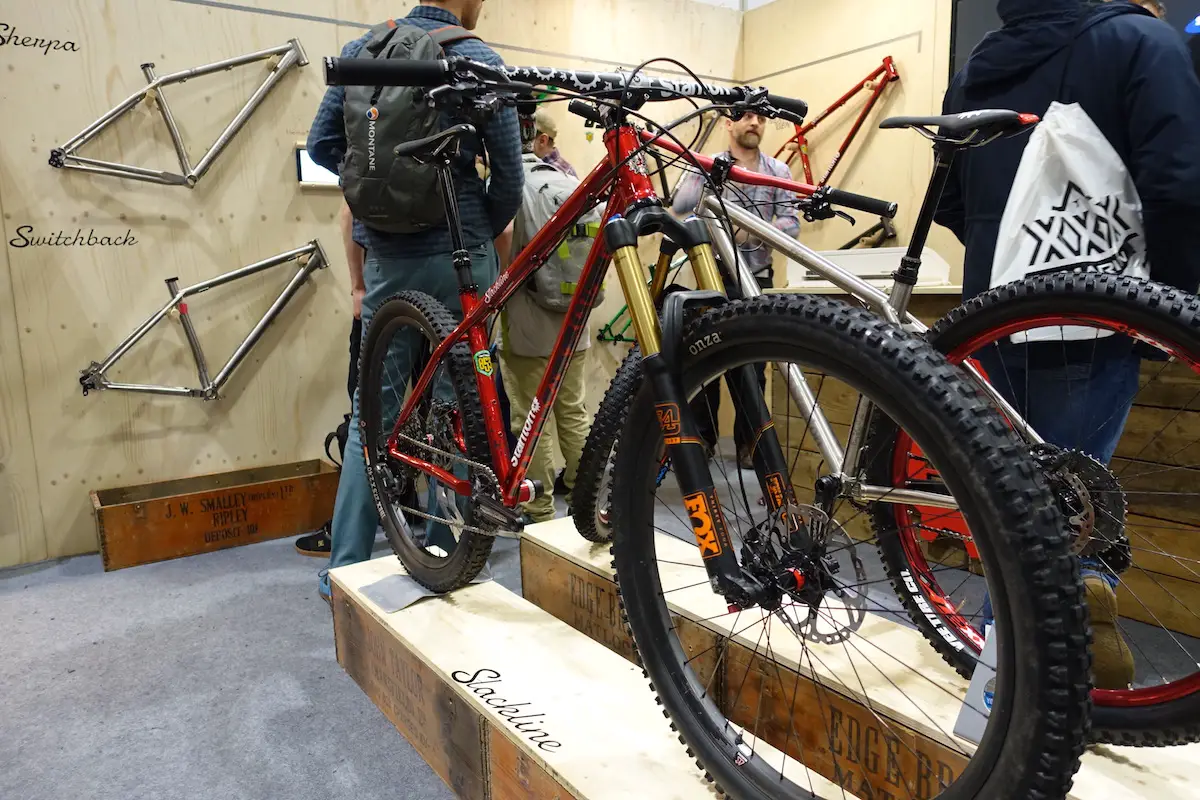If you’re into steel hardtails designed for British conditions, then there’s a very good chance you know the Stanton Bikes name well. Originally launched back in 2010, the Stanton brand emerged from the depths of Dan Stanton’s mind. Dan was a man who was on the lookout for a snappy and quick-handling hardtail equipped with 4X-like handling. After realising that what he wanted didn’t really exist, Dan embarked on a mission to create his very own bike. And the rest – as they say – is history.
If you’re not familiar with how the rest of the story goes, then do yourself a favour and head to the Stanton Bikes website to read about it from the very beginning. It’s a terrific story that details the humble beginnings of the Stanton project, along with some of the key moments along the way that have helped shape the brand into what it is today.

At the 2017 London Bike Show, Stanton Bikes had one of the best looking displays going. Highlighting the significant progression for the small British company, there were no less than six different models on display, along with a growing range of components and build kit options.

For the most part, Stanton Bikes work with steel. There’s the Slackline and Switchback models built around 27.5in wheels, and there’s the Sherpa that’ll fit 29in or 27.5 plus wheels. In addition to those models and multiple colour options, both the Sherpa and Switchback are produced in Titanium as well, which Dan is very proud about. As we took a tour through the Stanton booth at the show (see the video below), it became abundantly clear that these aren’t your typical catalogue frames from Taiwan with a simple sticker slapped on – there’s a whole load of detail lurking beneath the painted exterior.

Starting with the biggest and baddest model of the range, the Switchback is a hardcore hardtail that’s ready to take up to a 160mm travel fork. The front-end is built from Reynolds 631 tubing, with the top and down tubes featuring triple-butted wall thicknesses, while the rear end is constructed from Reynolds 525 tubes that are cold worked into their final state.

In terms of geometry, the new generation Switchback rocks a 65° head angle and super-short 415mm chain stays. It’s built to provide you with loads of descending capability, whilst retaining that snappy handling that Dan Stanton wanted in his original bike back in 2010.

New additions to the V2.0 version of the Switchback include a 44mm head tube, 142x12mm thru-axle dropouts, and stealth dropper post routing.

The yoke behind the bottom bracket is a completely unique design for Stanton. It’s a one-piece CNC machined piece of metal that is designed to provide sufficient chainring clearance, while allowing room for up to a 2.5in rear tyre.

Want lighter? Stanton also makes the Switchback in a Titanium version that sells for £1649 for the frame, as oppose to £599 for the steel version. Weight drops down a bit to 1.9kg for the frame, while geometry remains the same as the steel model. However, thanks to some customised trickery around the bottom bracket area, the Switchback Ti can take up to a 2.8in wide rear tyre.


Here’s the custom bottom bracket shell that we mentioned earlier. It’s a chunky item that’s CNC machined out of a single piece of titanium. And yes, that’s as expensive to make as it sounds. Note that despite the luxurious material and expensive production process, the BB still relies on a good ol’ 73mm threaded shell, and there’s ISCG tabs for those that rad.





The Switchback Ti has some stunning details on the frame, including the bridging plate at the upper section of the seat stays, complete with Stanton branding.


So the 142x12mm thru-axle locks down via the modular Swapout system. This allows you to run the 142x12mm thru-axle, a 135x10mm axle, or even a horizontal setup to rock as a singlespeed. Shown in the above photo however, is another option again; Boost 148x12mm. These are currently prototype, but it’s Dan Stanton’s way of adding some additional future-proofing to the existing Switchback model, so current customers can upgrade to a Boost wheelset if they want.

Moving down the travel line is the Slackline. It’s still a burly trail hardtail designed around 27.5in wheels, but the Slackline is built to take a slightly shorter travel fork, with a recommended fork travel of 100-140mm. Geometry is chilled a little bit compared to the Switchback, making the Slackline a more friendly bike for trail centres and all-day pedalling.


The Slackline can be had in grey or red, and like the Switchback, it sells for £599 for the frame. To keep weight down, Stanton went with lighter gauge Reynolds 853 tubing for the front end, though an eclectic mix of Reynolds 631 and 525 rounds out the rest of the bike. As with all Stanton frames, every tube and junction is unique to these bikes you see here – you won’t find nothing out of a stock catalogue.

While the fork travel drops down slightly compared to the bigger Switchback, the Slackline is still equipped with a chunky Fox 34 fork on this model shown at the London Bike Show, and it delivers a 66.5° head angle that keeps the front wheel out nice and far ahead of the rider.

Also using Reynolds 853 tubing, the Stanton Sherpa shares some similar design aspects to the Slackline, but adds in bigger 29in wheels into the cooking pot. Like many modern 29ers, the Sherpa is also 27.5 plus compatible, so you can build it as you like really. Recommended fork travel max’s out at 120mm, and that’ll give you a 67.5° head angle. Also equipped with 142x12mm modular Swapouts and a tidy bottom bracket/chain stay yoke to keep the rear end short and snappy.

The Sherpa can also be had in a Titanium version for those with more exotic taste, or simply for those who want a bike that’ll last longer than the next iPhone. You may recall that we reviewed the Stanton Ti not long ago, and it was an absolutely brilliant piece of kit. Check out the full feature of our Titanium Hardtails group test here.

Despite having our attention caught by all the pretty frames on display, there was one bike at the Stanton booth that stood out from all the rest. With its colourful blue paintjob and chunky plus tyres, the Sherpa+ has been built as a working prototype that Stanton is currently testing. It’s built around the existing Sherpa platform, but elects for wider rubber, a rigid fork and all the necessary mounting points to bolt on all sorts of racks and bags for overnight bikepacking expeditions.





But that’s where the similarities with the existing Sherpa end. The Sherpa+ is designed as a purpose-built off-road bikepacking bike, and as such it gets some girthier rubber to provide a little more comfort and traction while rocking a rigid setup.

Look closely, and you’ll see the split dropout that allows you to mount a belt drive in there. Along with the modular Swapouts, this looks to be a very, very versatile piece of kit.


Bikepacking is the hot ticket right now, but while Stanton was keen to get on board, it was also keen to retain the handling of the existing Sherpa while adding in bikepacking-friendly features. Yes you can carry your sleeping bag, tent and camp stove on it, but it’s still got many of the same design features and geometry numbers as the current Sherpa 29er, so it’s still a proper mountain bike. Mind you, it’s still in prototype phase, so stay tuned for more updates once production numbers are locked in.



Whilst we were in the Stanton Bikes booth, we had the chance to chat with the main man behind the brand, Dan Stanton. The guy is an absolute legend, and while being super knowledgeable, he’s able to deliver all of that information inside his head without being condescending – a trait that is typical amongst usual bike industry types.
Check out our video tour of the Stanton Bikes booth below, and for more information, head on to the Stanton Bikes website.





Thon Sherpa looks good, nice to see another 29+ option.
Yep Sherpa 29+ please 🙂
Yep, 29+ Sherpa please (although keep the trail friendly geometry rather than bike packing……)